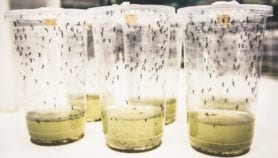By: M. Sreelata
Send to a friend
The details you provide on this page will not be used to send unsolicited email, and will not be sold to a 3rd party. See privacy policy.
[NEW DELHI] China and India, the world’s two most populous countries, are beset by stagnation in the production of staples like rice, wheat, soybean and maize (corn), says a new study on crop yield growth.
Based on statistics from around the world during the 1951– 2008 period, the study ‘Recent patterns of crop yield growth and stagnation’, says that for some crops in China and India the spatial extent of yield stagnation is more than half the cropped area.
The study, published in the 18 December issue of Nature Communications, by a team of scientists at the University of Minnesota’s Institute on the Environment (IonE) and McGill University, Canada, calls for better investments in agriculture to meet a projected doubling of food demand by 2050.
The team developed geographically detailed maps of annual harvested areas and yields of the four staples from 1961 to 2008. Virtually all regions showed crop increases during that period, but in 24–39 per cent of the harvested areas yields had plateaued or declined in recent years.
SPEED READ
- Crop yields of staples stagnate across swathes of India and China
- Rice yields in the croplands of China, India and Indonesia are declining
- Costs of farming inputs are outstripping returns
Looking at 2.5 million census observations on crop yields from different countries, the study expresses concern at the findings on rice, wheat and maize which provide 57 per cent of the world’s calories.
For the world’s top three rice producers, China, India and Indonesia, there are no yield gains in 79 per cent, 37 per cent and 81 per cent of their rice croplands, respectively.
Similarly, top wheat producers, China, India and the United States, show no yield increases in 56 per cent, 70 per cent and 36 per cent of their wheat croplands respectively.
IonE research fellow Deepak K. Ray, who led the research, told SciDev.Net that the reduced output in India could be attributed to seed issues, pests and lack of water, besides poor returns.
"For rice and wheat the major issues appear to be lack of good seeds, lack of irrigation, build up of pests and weeds and returns that do not match the rising costs of agricultural inputs," Ray said.
Suman Sahai, convenor of the New Delhi-based Gene Campaign lobby, echoes Ray’s view. "Yields are falling as farmers don’t wish to invest in inputs as the returns are too low," she says. "Besides, climate change has also played a role in falling yields."
Ray says that the study’s value lies in "actionable intelligence” for identifying problems at the district level.













